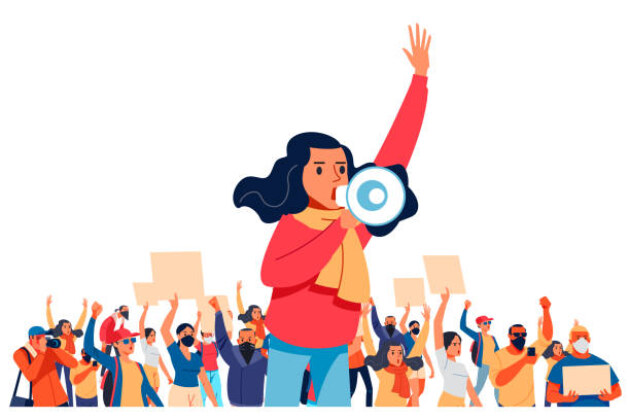How Youth Can Tackle the System and Fight for a Better Future
The global stage is increasingly being graced by passionate youth activists pushing for change in areas like climate justice, gun control, and human rights. Yet, while the courage and enthusiasm of young activists are often inspiring, their journey is not without obstacles. From societal resistance to the challenges of gaining fair media coverage, youth activists face a range of issues that can make their efforts feel like an uphill battle. But here’s the thing: every major movement in history had its struggles, and the youth have the power to overcome them. In this article, we’ll break down the key challenges facing young activists today and explore how they can keep fighting for change.
Table of Contents
Introduction: The Power of Youth, The Struggles They Face
Let’s face it—youth activists today are a force to be reckoned with. From Greta Thunberg’s climate strikes to the March for Our Lives movement, young voices are loud, proud, and making waves. But, just because they’re fighting the good fight doesn’t mean it’s easy. Youth activists encounter several barriers that can derail their progress. Whether it’s the resistance they face from older generations, the biased media coverage, or the way they’re perceived in the public eye, the road to meaningful change is far from smooth.
So, if you’re a young person looking to create a positive impact, remember this: challenges are part of the package. But they’re also opportunities for growth, learning, and, most importantly, change. Let’s take a closer look at these challenges, and more importantly, how you can overcome them and make your voice heard loud and clear.
Resistance from the Establishment: Why the “Old Guard” Isn’t Always on Your Side
Here’s a harsh truth—some people just don’t like change. Youth activists often face intense pushback from those in power, whether they’re politicians, business leaders, or just adults who prefer the status quo. After all, the establishment has had the same game plan for years. Who are these young upstarts to come along and shake things up?
This resistance can come in many forms—dismissal, ridicule, or even outright hostility. Youth activists are often told, “You’re too young to understand,” or “Wait until you’ve lived a little.” It’s frustrating, we know. You might feel like you’re being told to sit down and be quiet, but here’s the thing: they’re just scared. They’re scared because you’re challenging their complacency, and in doing so, you’re showing that change is possible.
The solution? Keep pushing forward. The greatest movements in history have always faced resistance, but that didn’t stop them. If anything, it fueled their fire. So, next time you encounter resistance, take a deep breath, smile, and remember—you’re on the right track.
Media Coverage: The Double-Edged Sword
Ah, the media. Love it or hate it, the media plays a pivotal role in how movements are perceived. Unfortunately, youth activists often face biased or distorted media portrayals. While some movements gain widespread coverage, others are dismissed or ignored altogether. Youth-led protests are sometimes minimized as “teenage tantrums” or “just a phase.” How can you expect real change when your efforts are treated like a passing trend?
One of the biggest challenges is that the media often gravitates toward sensationalism. If you’re organizing a peaceful protest, but some guy with a bullhorn starts shouting inappropriate things—guess who gets the headline? Not you, the well-prepared activist, but the drama-filled chaos that steals the spotlight.
So, what’s the fix? First off, take control of your narrative. Social media is your friend here. With platforms like Instagram, Twitter, and TikTok, you can share your story and make sure it’s being told the way you want it. When mainstream media misses the mark, build your own platform. The more visible and organized your message, the harder it will be for the media to ignore.
Public Perception: From ‘Idealistic Youth’ to ‘Change-Makers’
Another challenge youth activists face is how they’re perceived by the general public. Sure, many people admire the passion and energy of young people fighting for change, but others still view them as naïve or overly idealistic. Let’s be honest—how many times have you heard someone say, “Kids these days don’t understand how the world really works” or “When I was your age, I didn’t have time to protest, I was too busy figuring out life!”? It’s frustrating, to say the least.
This perception can create a barrier to gaining credibility and support from a wider audience. But here’s a little secret—youth aren’t naïve, they’re forward-thinking. You see things that older generations might overlook, like the urgent need for climate action or the importance of responsible gun laws. Young people have the capacity to innovate and create solutions that older generations might never have considered. So, while others might roll their eyes, remember that you are the ones with the vision for a better future.
The solution to shifting public perception is simple: keep showing up. The more you participate in discussions, protests, and community action, the more people will start taking you seriously. Let your results speak louder than your critics. Over time, the narrative will change, and you’ll be seen not just as idealistic youth, but as the change-makers you truly are.
How to Overcome These Challenges: Youth, Take Action!
It’s easy to get discouraged when faced with resistance, biased media coverage, and public skepticism. But here’s the thing: You are the future. Your actions today shape the world of tomorrow. And trust us, every time you speak out, participate in a protest, or even share a well-crafted post on social media, you’re building momentum toward something bigger.
Here are a few tips to help you keep the fire burning:
- Educate Yourself: The more you know about the issues you care about, the stronger your arguments will be. Arm yourself with facts, figures, and solutions.
- Stay Positive: Yes, it’s frustrating when others don’t take you seriously. But remember: every great movement faced adversity. Keep your eyes on the prize.
- Collaborate: You’re not alone in this. There are countless like-minded young people out there who are also fighting for change. Build coalitions, support each other, and work together to amplify your impact.
- Be Persistent: Change rarely happens overnight. But if you’re consistent and persistent, your efforts will pay off. So, keep showing up, speaking out, and pushing for progress.
Conclusion: Your Time Is Now
Youth activism is more than a trend—it’s a movement. It’s the voices of young people demanding a better future and holding the powerful accountable. While resistance, media challenges, and public perception can be tough, they’re not insurmountable. In fact, these obstacles are signs that you’re on the right path.
So, to every young person reading this: It’s your time. Don’t wait for permission to take action. Stand up, speak out, and fight for the changes you want to see. The future belongs to you—make it a future worth living for. And if you happen to ruffle a few feathers along the way? Well, that just means you’re doing something right. Keep fighting for what matters, and don’t let anything—or anyone—hold you back.





We invite you to join us on this journey of artistic discovery and cultural enrichment. By supporting emerging artists, you not only promote their innovative work but also contribute to the vibrant world of art and design. If you’re interested in learning more about our artists or securing distinctive pieces for your collection, Artsobo.com is the perfect platform to begin your exploration.For those interested in forming partnerships or collaborations, we welcome backlink requests and opportunities to network within the art community. Enhancing connections among artists and art lovers drives our commitment to nurture creative talent and expand the reach of contemporary and abstract art. Discover the finest in modern art at Artsobo.com, where creativity meets opportunity. We look forward to welcoming you to our community and helping you find the perfect piece that speaks to your artistic sensibilities.